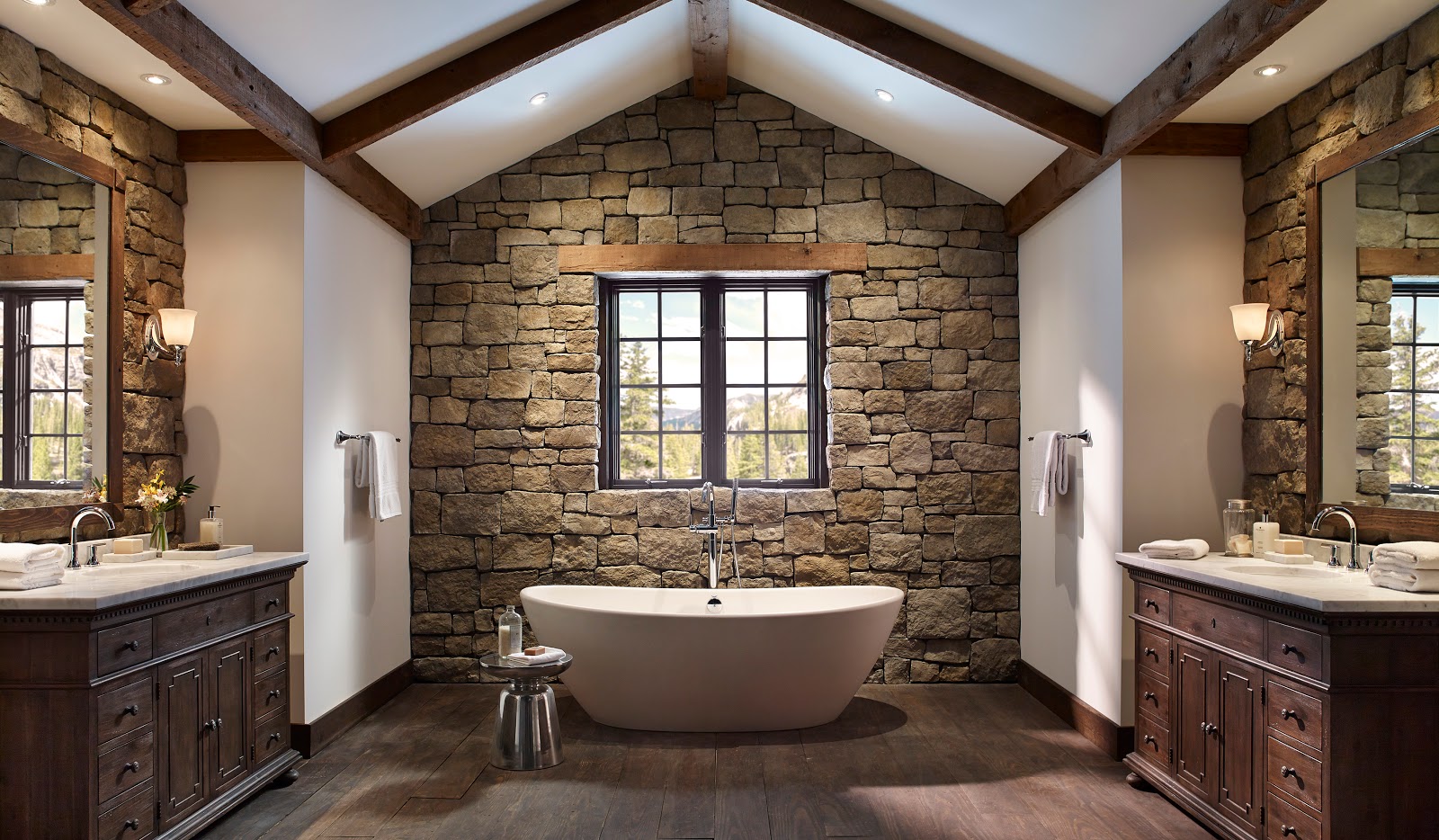Stone Bathroom Design Ideas

Stone is a timeless and elegant material that adds a touch of luxury and sophistication to any bathroom. Its natural beauty, durability, and versatility make it a popular choice for various bathroom design styles. Whether you prefer a modern, traditional, farmhouse, or contemporary aesthetic, stone can be incorporated to create a stunning and functional space.
Stone Bathroom Flooring
Stone flooring is a durable and stylish option for bathrooms. Its natural beauty and resistance to moisture and wear make it an ideal choice for high-traffic areas.
- Travertine: Known for its warm tones and distinctive holes, travertine is a popular choice for traditional and farmhouse bathrooms. It offers a classic look and adds a touch of rustic charm.
- Marble: This luxurious and elegant stone is perfect for creating a sophisticated and timeless bathroom. Marble comes in various colors and patterns, allowing you to personalize the space.
- Slate: A natural stone known for its durability and slip-resistance, slate is an excellent choice for bathroom floors. Its earthy tones and unique textures add a touch of nature to the space.
- Granite: A highly durable and scratch-resistant stone, granite is a popular choice for bathroom floors. Its wide range of colors and patterns allows you to create a unique and stylish space.
Practical Considerations for Stone Bathrooms
Stone bathrooms offer a luxurious and timeless aesthetic, but their beauty requires careful planning and maintenance to ensure their longevity and functionality. This section delves into the practical aspects of designing a stone bathroom, focusing on the importance of proper sealing, grout selection, and layout considerations.
Sealing and Maintenance
Sealing stone surfaces is crucial to protect them from stains, water damage, and wear and tear. Natural stone is porous and can absorb liquids, making it susceptible to discoloration and deterioration over time. Applying a sealant creates a protective barrier that prevents liquids from penetrating the stone’s surface.
- Types of Sealants: There are various types of sealants available, each with its own properties and suitability for different types of stone. Consult with a stone specialist or a professional contractor to determine the best sealant for your specific stone type and bathroom environment.
- Frequency of Application: The frequency of sealant application depends on the type of stone, the level of traffic, and the amount of exposure to water and cleaning products. A general rule of thumb is to reseal stone surfaces every 1-3 years.
- Maintenance: Regular cleaning is essential for maintaining the beauty and integrity of stone surfaces. Use mild, pH-neutral cleaners specifically designed for stone. Avoid harsh chemicals, abrasive cleaners, and acidic substances that can damage the stone and its sealant.
Grout Selection, Stone bathroom design ideas
Grout, the material used to fill the gaps between tiles, plays a significant role in the aesthetic and practical aspects of a stone bathroom. Choosing the right grout color and texture can enhance the overall design while ensuring durability and ease of cleaning.
- Color: Grout color can either blend seamlessly with the stone or create a contrasting effect. Light-colored grout can brighten a space and highlight the stone’s pattern, while darker grout can create a more dramatic look.
- Texture: Grout comes in various textures, from smooth to textured. Smooth grout is easier to clean but can show dirt more readily. Textured grout offers a more rustic look and can help to hide dirt and imperfections.
- Water Resistance: Grout should be water-resistant to prevent water penetration and mold growth. Epoxy grout is a highly water-resistant option that is suitable for areas with high moisture exposure, such as shower floors and walls.
Bathroom Layout
Designing a stone bathroom layout requires careful consideration of the practical aspects of stone, including water resistance, slip resistance, and ease of cleaning.
- Water Resistance: Stone surfaces should be properly sealed and protected from excessive water exposure. This is particularly important in areas like showers and bathtubs. Consider using waterproof materials like epoxy grout and selecting stone types that are known for their water resistance.
- Slip Resistance: Stone floors can be slippery when wet. To minimize the risk of falls, choose stone types with a rougher texture or consider incorporating slip-resistant tiles in areas with high moisture exposure.
- Ease of Cleaning: Stone surfaces should be easy to clean and maintain. Choose stone types that are resistant to staining and scratches. Avoid using stone with intricate patterns or textures that can trap dirt and grime.
